Penguin is a flightless bird that spends most of its life in the ocean. There are many different species (kinds) of penguin. They live in many different places, ranging from the equator (an imaginary line around the middle of Earth, midway between the North and South poles) to Antarctica. In the water, penguins swim with speed and grace. On land, they stand upright and walk with a waddle. They walk like this because they have short legs set far back on tall, torpedo-shaped bodies. Penguins may appear awkward on land, but they can walk about as fast as human beings. Some also climb rocky slopes, sometimes hopping from rock to rock. Other penguins travel over ice and snow by tobogganing (sliding on their bellies).
Loading the player...Penguins
The ancestors of penguins lost the ability to fly through the air millions of years ago. As they began to spend most of their time in the water, their wings came to look more like flippers. This major change helped make penguins excellent divers. Today, penguins “fly” through the water in much the same way other birds fly in the air. A penguin uses its feet and tail to steer underwater.
The body of a penguin
is specially suited to living in the sea. Penguins are covered with short feathers that form a thick, waterproof coat. A penguin has a much denser covering of feathers than does a flying bird. Penguin feathers are black or bluish-gray, except on the animal’s underside, where the feathers are white. Some penguin species have yellow or orange feathers on the head, neck, or breast. Certain penguin species have a crest of feathers on the head. A penguin’s beak can be black, red, bright purple, or orange. The feet are black, pink, or pink on top and black on the bottom.
Loading the player...Penguins walking
The largest penguin is the emperor penguin. It stands about 3 feet (1 meter) tall and may weigh up to 100 pounds (45 kilograms). The emperor penguin ranks as one of the heaviest birds. The smallest penguin is the little penguin, sometimes called the fairy penguin or blue penguin. It stands about 1 foot (30 centimeters) tall and weighs about 2 to 3 pounds (1 to 1.5 kilograms). Most other species are 1 1/2 to 3 feet (45 to 90 centimeters) tall and weigh 5 to 15 pounds (2.3 to 6.8 kilograms).
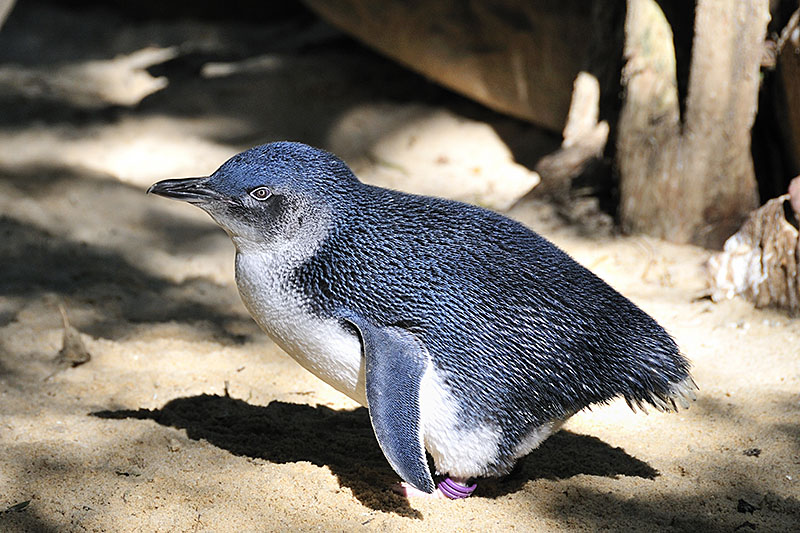
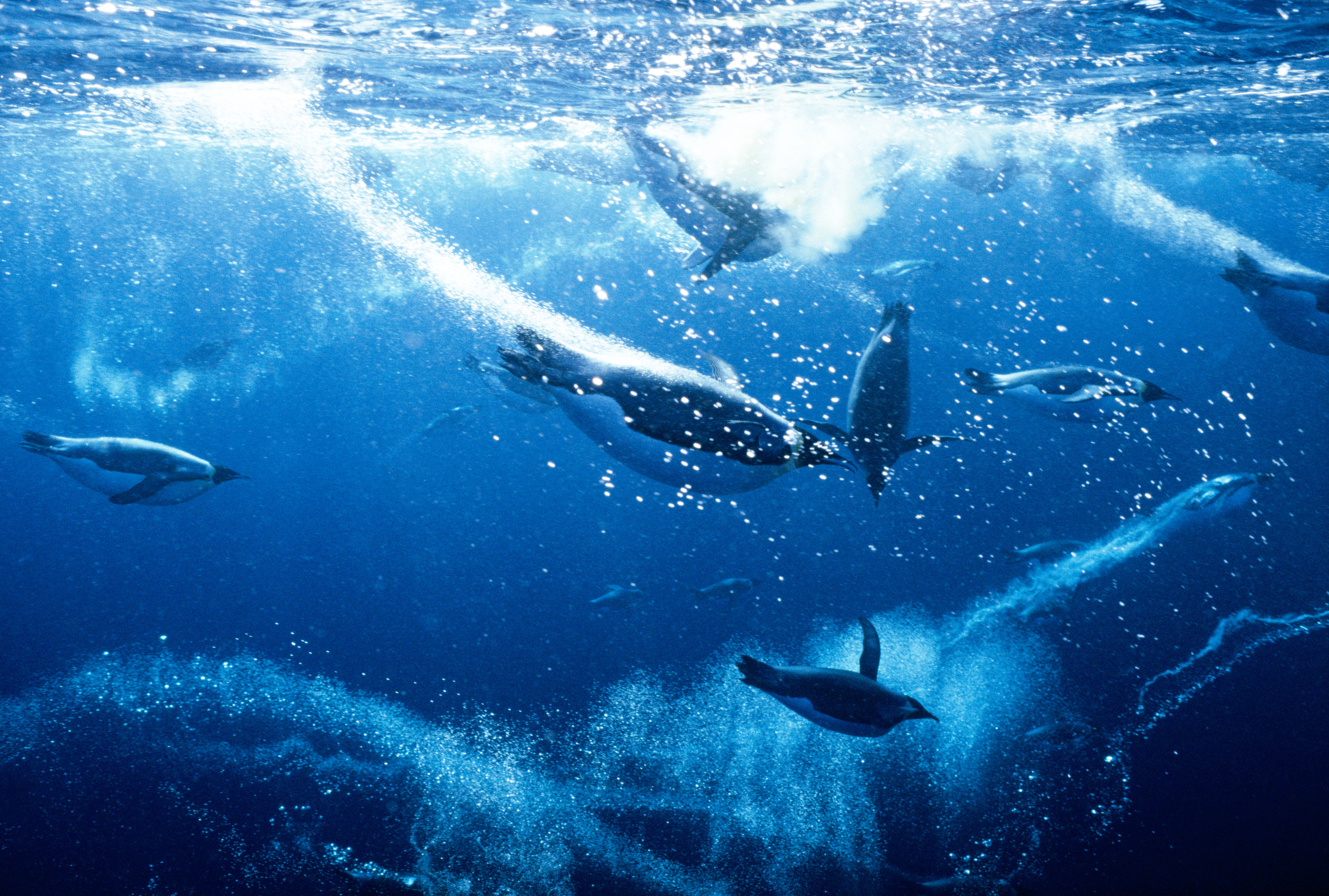
Penguins usually swim at speeds up to 10 miles (16 kilometers) per hour, which they can do for long periods of time. In short bursts, they can reach higher speeds. When swimming below the surface, penguins leap into the air to take a breath without slowing down. Some penguins can dive much deeper than any other bird. Emperor penguins usually dive to 500 to 800 feet (150 to 250 meters) below the surface. They can reach nearly 2,000 feet (600 meters) below the surface during their deepest dives. They usually hold their breath for 2 to 9 minutes and are able to hold their breath for longer than 20 minutes.
Where penguins live.
The Galapagos penguin lives the farthest north of all penguins. This bird breeds (makes young) on the Galapagos Islands, which lie on the equator in the eastern Pacific Ocean. Some of these birds can be found north of the equator. All other wild penguins live south of the equator. Some species make their home among the islands near New Zealand and Australia. Other penguins live on the coast of South America; near southern Africa; or far south, in the icy waters near Antarctica.
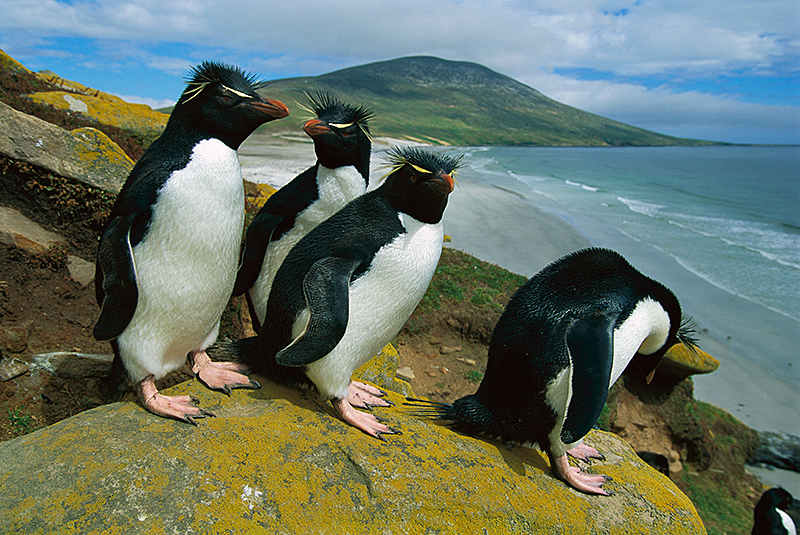
The life of penguins.
Penguins eat fish, squid, and crustaceans, which include krill (small shrimplike animals). Penguins have keen eyesight that helps them to see prey even in the deep, dark water. Animals that feed on penguins include seals, sea lions, and killer whales.
Loading the player...Emperor penguin
Penguins must leave the sea to lay eggs and raise their young. They make their nests in enormous gatherings called colonies. Many colonies are on islands. A penguin colony can have thousands of members. The colonies are noisy because the birds often call out to find their mates or chicks. Penguins recognize one another mostly by the sound of their voice.
Some penguins make their nests by digging burrows under large rocks or bushes. Most Antarctic penguins build nests of pebbles on the ground. The king penguin and emperor penguin build no nests at all. They keep their eggs or small chicks warm under a fold of their belly, holding them on the tops of their feet.
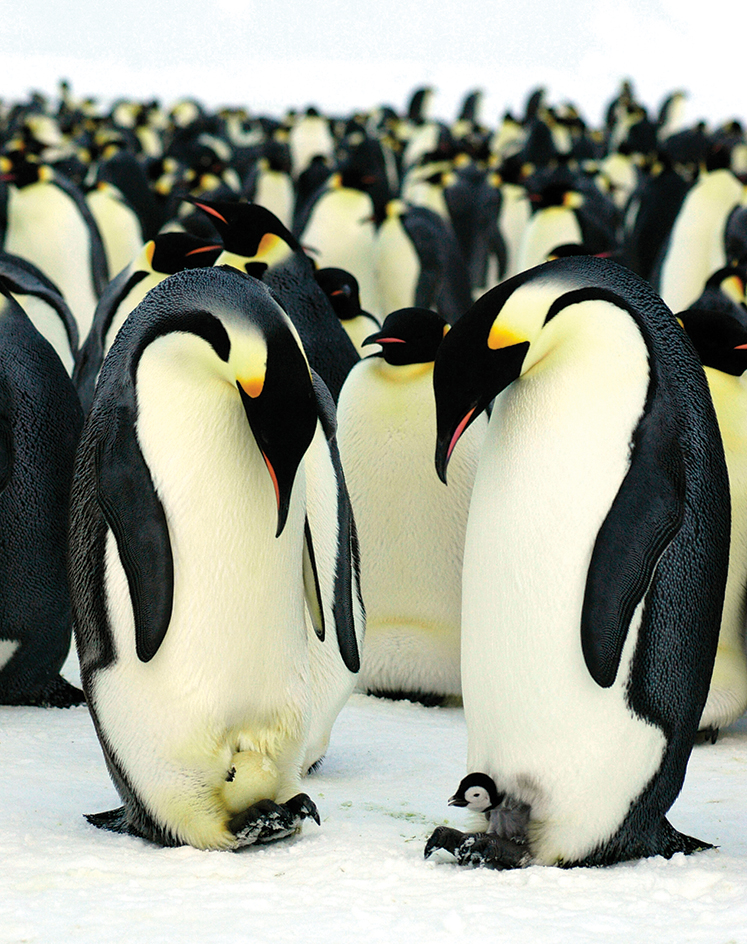
A penguin pair may breed together every year for many years. The female usually lays one or two eggs. Penguin eggs take from 30 to 65 days to hatch. Larger species take longer to hatch and to grow. Once laid, the egg must be incubated (kept at body temperature). In many species, the male and female take turns searching for food and caring for the eggs. The parent that stays with the eggs does not eat while the other parent is away, sometimes for a week at a time or longer.
When a chick hatches, the parents guard it until it needs so much food that both parents must go to sea to hunt. The chick remains near the nest or joins a crèche (close group of chicks) for the first 2 to 12 months of its life, depending on the species. The chick is covered in downy feathers that are slowly replaced by mature ones. It eats partially digested food fed to it by its parents. When young penguins are old enough, they leave the colony and learn to live and feed themselves at sea. They have to return to land to molt (shed their feathers) and eventually to breed. Penguins usually choose a mate and a nesting site close to where they hatched. Though penguins sometimes travel thousands of miles or kilometers from their colony, they are able to return to their exact birthplace. Scientists have yet to discover how penguins navigate and find their way home.
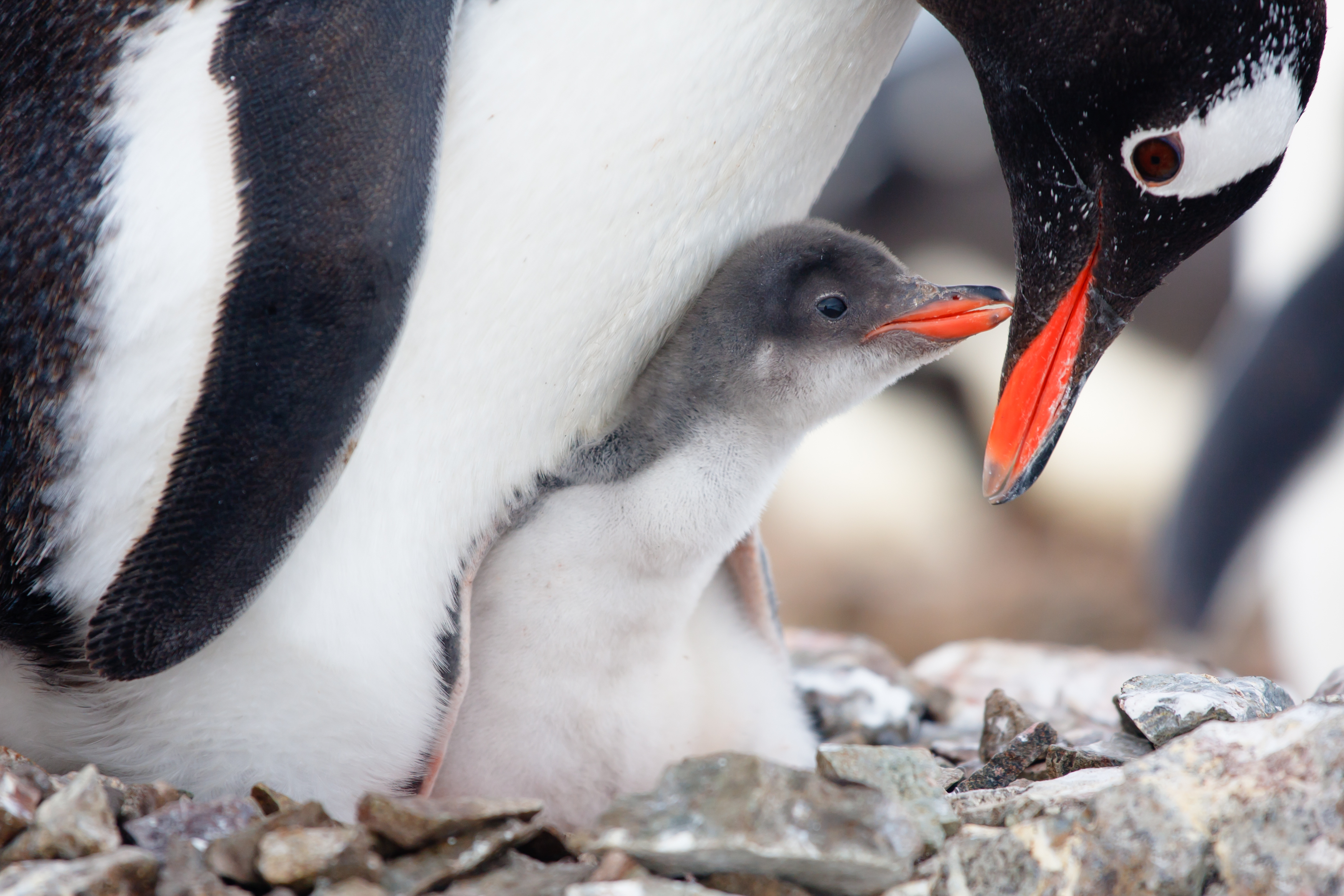
Some penguins kept in zoos have lived for more than 30 years. But in the wild, most species have a life span of about 20 years.
Conservation.
Penguin populations are easily disturbed by human activity. Human visits to their colonies can cause parents in some penguin species to abandon their nests or chicks. An especially serious problem for penguins is oil pollution. Even a small amount of oil in the ocean is harmful to the birds. It robs their feathers of the ability to keep the birds warm. When the penguins try to clean their feathers, they swallow the oil, which is poisonous to them. Commercial fishing in waters where penguins live makes it harder for them to find enough food. As human activity has spread into areas where penguins live, most penguin species have become in danger of dying out.
